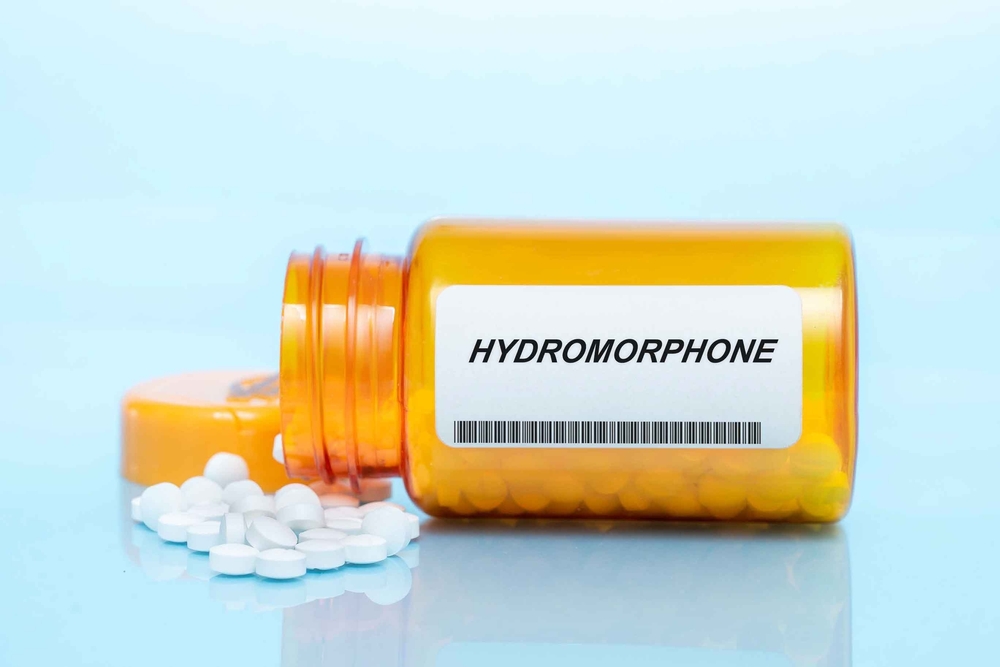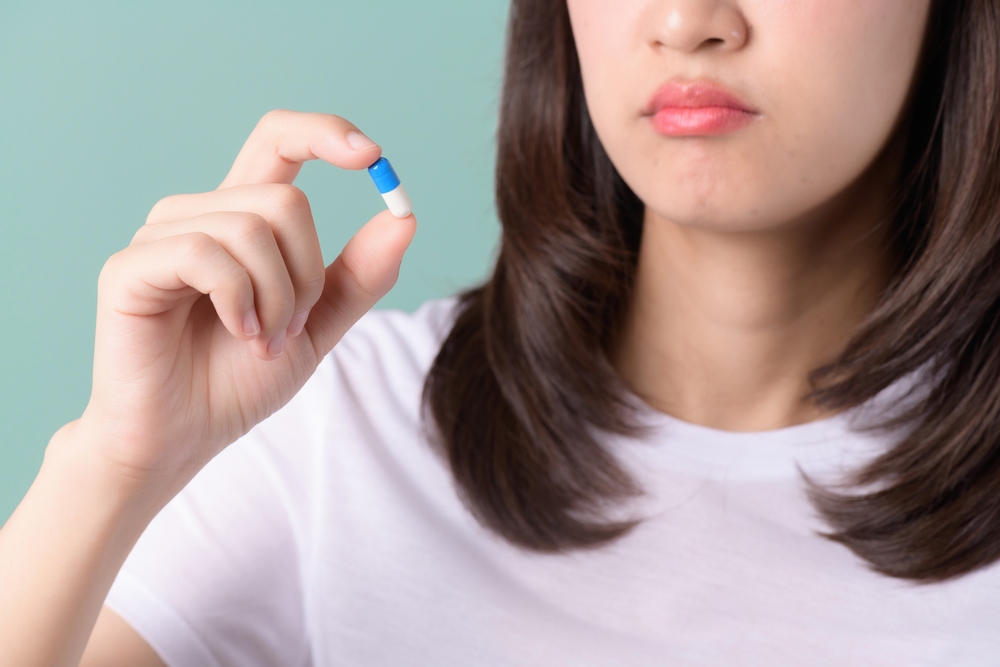Last Updated:
August 1st, 2025
Dilaudid Addiction | Symptoms, Effects and Causes
Dilaudid is an exceptionally powerful opioid that is estimated to be up to eight times more potent than morphine. Despite stringent international regulations, its abuse continues to be an issue both for patients with valid prescriptions as well as people using it to party or medicate themselves. Inappropriate Dilaudid use can swiftly lead to a serious addiction with life-threatening implications. Preventing Dilaudid addiction requires a comprehensive understanding of the drug’s action and its risks to both medical professionals and users.

What is Dilaudid?
Dilaudid, the brand name for hydromorphone, is a synthetic opioid used mainly to manage moderate to severe pain. It is especially helpful for patients dealing with long-term cancer pain, short-term severe pain and sometimes even ongoing mild pain.
You can take Dilaudid as a pill but it is also available as a shot, either into a muscle or directly into a vein. You will typically start to feel pain relief within 30 minutes to an hour and these effects can last up to six hours or so.
As well as Dilaudid, hydromorphone is known under various other brand names, including:
- Palladone
- Hydromorph Contin
- Sophidone LP
- Hydrostat
- Dimorphone
- Hymorphan
- Hydal
- Opidol
- Laudicon
All of these are regulated as Class-A controlled substances in the UK. This strict classification means that illegal possession, supply or production of hydromorphone medications is met with harsh penalties, including up to seven years of imprisonment for possession and the possibility of life in prison for supply or production.
Struggling with an addiction? If you are ready to seek help, reach out to us today, and a member of our compassionate team will help you find the best option for starting your recovery journey.
What is Dilaudid addiction?
Dilaudid’s misuse spans from recreational abuse to unintended medical overuse. Recreationally, it is abused for the high it creates by impacting the brain’s reward pathways and surging your dopamine levels. Medically, misuse can occur when individuals take more than their prescribed dose or use the medication longer than necessary, sometimes self-medicating without a prescription. Both groups might even start using Dilaudid in riskier ways, like snorting or injecting, to get a more intense effect.
Whatever the form of misuse, a dangerous Dilaudid addiction develops when you continue to use Dilaudid even though the negative consequences are clear. Frequent high doses of Dilaudid can lead to tolerance, which means the same amount doesn’t have the same effect anymore. Soon after tolerance builds up, physical dependence can follow, which means the body relies on Dilaudid to feel normal, and not taking it can cause intense reactions called “withdrawal symptoms.
Over time, the challenges also become psychological, and users might start to feel that they need the drug to cope with day-to-day hardships, difficult emotions and personal stress when they become both physically and psychologically dependent on Dilaudid, usage shifts from a choice to a necessity.
Spotting the warning signs of Dilaudid addiction
Hydromorphone addiction often begins subtly, with gradual changes that might initially seem insignificant. However, these can quickly develop into a critical situation. Consider if you have noticed any of the following side effects of hydromorphone addiction:
- Devoting much of your time to activities related to Dilaudid.
- Lying about how much and how often you use Dilaudid.
- Taking risks, including committing crimes to obtain Dilaudid.
- Dropping activities and responsibilities you used to enjoy or keep up with for Dilaudid.
- Neglecting your health and avoiding medical care.
- Facing financial strain from spending on Dilaudid.
- Withdrawing from friends and family to hide your hydromorphone addiction.
- Experiencing severe mood swings and changes in your behaviour.
- Causing damage to your professional life and relationships.
- Refusing to admit the addiction or recognise its effects.
These hydromorphone addiction signs and symptoms should be a wake-up call that you need to seek professional help fast.
What causes hydromorphone addiction?
While the path to hydromorphone addiction tends to follow the tolerance-dependence-addiction route, not everyone who uses the drug becomes addicted. This is because a mixture of these factors often plays a significant role:
Genetic differences between people
One major factor for an increased risk is genetics. Think of it like this: just as you might inherit your eye colour from your parents, you can also inherit a higher risk of addiction if your family has a history of it.
The state of your mental health
Mental health disorders can be another major factor in the development of hydromorphone addiction. Those suffering from conditions such as anxiety, depression or PTSD may start to rely on Dilaudid as a quick fix to their emotional pain, which can commonly escalate to addiction.
Your personal environment
The environment around you can play a big role in whether you start using drugs. Things like growing up in a home where others use drugs, feeling a lot of pressure from friends or living in difficult economic conditions can all make drug use more likely.
Ongoing pain and Dilaudid use
People who are prescribed Dilaudid for long-term pain might become dependent on it without meaning to, especially if their doctors don’t carefully watch how much they’re taking.
Trauma and stress
When people face a lot of stress or go through traumatic events without good ways to cope, they might start using Dilaudid on their own as an escape or to find some relief. This self-medication can easily turn into hydromorphone addiction if not properly managed.
Poor support systems
Without supportive friends, family or access to resources that help manage life’s ups and downs, people may turn to substances like Dilaudid for support. This can quickly lead to misuse and, eventually, addiction, especially if they feel they have nowhere else to turn.
What are the worst side effects of Dilaudid addiction?
Dilaudid addiction and abuse can be incredibly dangerous as it is such a powerful drug. Some of the biggest risks include:
Respiratory depression
High doses of Dilaudid, particularly when taken alongside other depressants like alcohol or benzodiazepines, can lead to severe respiratory depression. This condition severely slows your breathing, which can quickly progress to critical situations like coma or death if not treated immediately.
Dilaudid overdose
The risk of overdosing on Dilaudid increases enormously when it’s used improperly, such as taking higher doses than prescribed or using it in non-recommended ways. An overdose of Dilaudid can be extremely dangerous, potentially causing respiratory failure and other life-threatening issues.
Mental health issues
Chronic Dilaudid abuse can severely impact mental health, potentially worsening symptoms of existing conditions such as depression or anxiety or triggering new issues, including psychosis.
Physical health problems
Prolonged misuse of Dilaudid can lead to significant physical health issues. These might include liver and kidney damage, digestive problems and a compromised immune system, leaving you more vulnerable to various illnesses.
Infectious diseases
If Dilaudid is injected using shared or unsterile needles, there is a heightened risk of contracting infectious diseases. This can lead to serious health consequences like HIV and hepatitis infections.
How to overcome Dilaudid addiction
The journey away from Dilaudid addiction starts with a carefully supervised opioid detox phase. During this stage, medical experts help slowly decrease the use of Dilaudid to lessen the severity of withdrawal effects. To help patients cope with these uncomfortable symptoms and reduce the risk of relapse, medications like methadone may be administered. Methadone acts as a less harmful opioid alternative, providing relief during the withdrawal process.
Once detox is behind you, the next step is to tackle the deeper issues at the heart of your dihydrocodeine addiction through comprehensive rehabilitation. Both NHS and private facilities in the UK offer opioid rehab programmes, but many find that private residential care, where you live at the facility full-time, offers a dedicated environment that focuses on healing without the interference of outside distractions.
Where can I get help for Dilaudid addiction?
Dealing with dihydrocodeine addiction is hard, but help is available to you wherever you are. Through Addiction Helper, you can access the help you need. Contact us today to learn more about your options and how we can assist you in taking the first steps towards sobriety.
Our compassionate team are ready and available to take your call, and guide you towards lasting the lasting addiction recovery you deserve.
Frequently Asked Questions
(Click here to see works cited)
- UK Rehab. “Dilaudid Addiction | Causes, Symptoms and Diagnosis.” UK Rehab, https://www.uk-rehab.com/prescription-drug-addiction/opioid/dilaudid/. Accessed 26 January 2025.
- UK Rehab. “Hydromorphone Addiction | Causes, Symptoms and Diagnosis.” UK Rehab, https://www.uk-rehab.com/prescription-drug-addiction/opioid/hydromorphone/. Accessed 26 January 2025.
- Abi-Aad KR, Derian A. Hydromorphone. [Updated 2023 Aug 17]. In: StatPearls [Internet]. Treasure Island (FL): StatPearls Publishing; 2025 Jan-. Available from: https://www.ncbi.nlm.nih.gov/books/NBK470393/. Accessed 26 January 2025.


